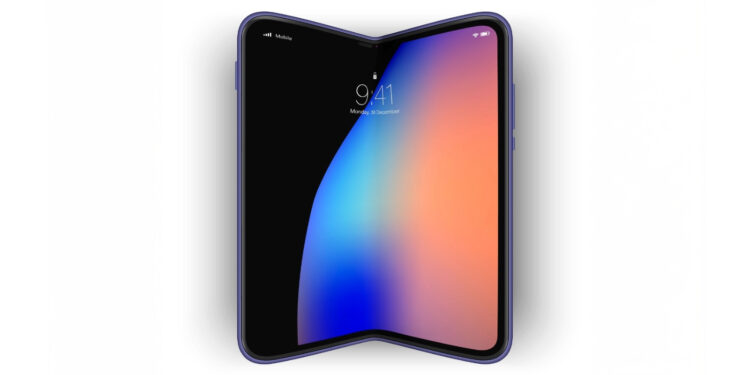For almost ten years, rumors about a foldable iPhone have been circulating. Until now, it remained mere speculation – but now it finally seems to be getting serious. According to current information, Apple could launch its first foldable iPhone in late 2026. Many details are still unclear, but what has been revealed so far suggests that Apple is going its own way and not simply copying existing concepts. Here's an overview of everything that's been revealed so far.
Apple has taken an unusually long time to develop a foldable iPhone. Other manufacturers like Samsung, Huawei, and Motorola have long had devices on the market. Apple, on the other hand, tests, rejects, and continues to develop before even releasing a prototype. The reason: Apple doesn't do things by halves. Above all, the problem with the visible creases on the display needs to be solved. Initial indications show that Apple is planning a device that could set new standards not only in terms of technology but also in terms of design.
Apple wants a foldable iPhone without a visible crease
The biggest problem with current foldable smartphones is the visible crease in the center of the display. While most users get used to it, it remains a visual and tactile flaw. Apple is working to eliminate precisely this. According to insiders, the company has only now decided on a final design because it wanted to develop the technology to the point where the display remains completely smooth when unfolded. The goal is a seamless user experience without any visible or noticeable interruption.
The device will open like a book
Apple is said to have opted for a design that opens horizontally – similar to Samsung's Galaxy Z Fold. Previous speculation also included a clamshell version that would open vertically, like the Galaxy Z Flip. However, Apple doesn't seem to be pursuing this direction for the time being. Instead, it's moving toward a foldable mini-tablet. This will impact the software: iOS will need to become significantly more flexible. Apple is expected to rework iOS 19, iPadOS 19, and macOS 16 to offer a more consistent and better adapted interface for different form factors. The new iPhone should be easy to use in both portrait and landscape modes.
When unfolded, it is as big as an iPad mini
The foldable iPhone is expected to have a 5.5-inch display when closed. That would be smaller than most current iPhones, which start at 6.1 inches. When unfolded, the display grows to 7.8 inches. This makes it almost as large as the old iPad mini at 7.9 inches. If that's hard to imagine, two iPhones placed side by side would roughly equal the size of the unfolded device. This makes it particularly attractive for users who read a lot, watch videos, or want to be more productive on the go.
Extremely thin – but also quite thick
Apple plans to use the technology from the upcoming iPhone 17 Air in the foldable iPhone. This will make the device just 4.8 millimeters thick when unfolded. That would be thinner than any other Apple device to date—even thinner than the 5.1-millimeter iPad Pro. When folded, the iPhone will be about 9 to 9.5 millimeters thick. That's comparatively bulky, but understandable given the technology it contains.
Touch ID instead of Face ID is possible
Face ID has been standard at Apple for years. However, Apple could return to Touch ID for the foldable iPhone. Well-known analyst Ming-Chi Kuo believes it's likely that Apple will use a power button with an integrated fingerprint sensor. This is due to the TrueDepth camera system, which is necessary for Face ID. If this module cannot be made smaller enough, it could make the device too thick. A slim Touch ID button would be the alternative – technically simpler, more space-saving, and even more practical in many everyday situations.
The price will be high
Foldable smartphones are generally expensive. Even models from Samsung or Huawei often cost €1,800 or more. Apple will be no exception. On the contrary: industry sources currently estimate a price between $2,000 and $2,500. Whether the device is worth the price remains to be seen. Apple is clearly positioning itself in the premium segment, and anyone who wants the foldable iPhone will likely have to dig deep into their pockets.
The foldable iPhone is taking shape
There's a lot to suggest that Apple will launch a foldable iPhone in 2026. Current rumors point to an innovative device with a sophisticated design, good software adaptation, and high-quality materials. At the same time, there are still many unknowns. A lot could change before the market launch – or Apple could pull the plug entirely. This has often been the case with other projects in the past. But if the foldable iPhone really does come, then it should make a statement – as is almost always the case with Apple. Until then, all we can do is wait, continue to observe, and be excited. Time for some fresh accessories? Visit our Amazon Storefront and discover a wide selection of products from leading manufacturers, including HomeKit! (Photo by seveniwe / Bigstockphoto)
- Apple's foldable iPhone: design, technology and launch
- Foldable iPhone: Thin design, strong battery life
- Apple's foldable iPhone is taking shape
- Apple vs. EU: Why iPhone users are now at a disadvantage
- Apple's foldable display: Mac or iPad – what's next?
- Apple's iPhone "Fold": This new information changes everything
- iPhone Fold: Apple relies on robust metal-glass hinge



